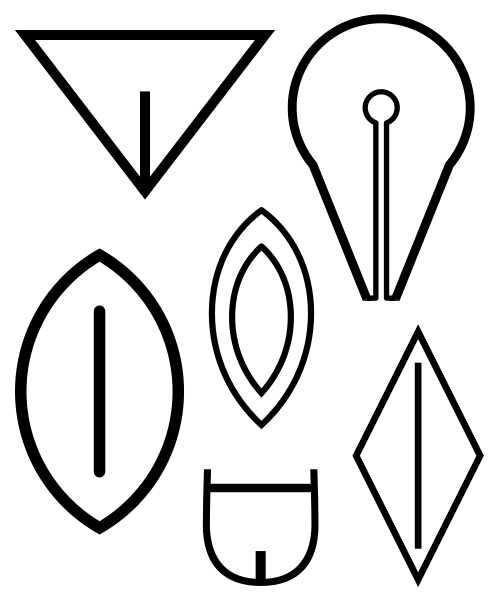Fayl:Vulva symbols.svg

Size of this PNG preview of this SVG file: 500 × 600 piksel. Boshqa oʻlchamlari: 200 × 240 piksel | 400 × 480 piksel | 640 × 768 piksel | 853 × 1 024 piksel | 1 707 × 2 048 piksel.
Asl fayl (SVG fayl, asl oʻlchamlari 500 × 600 piksel, fayl hajmi: 3 KB)
Fayl tarixi
Faylning biror paytdagi holatini koʻrish uchun tegishli sana/vaqtga bosingiz.
| Sana/Vaqt | Miniatura | Oʻlchamlari | Foydalanuvchi | Izoh | |
|---|---|---|---|---|---|
| joriy | 03:20, 24-Sentyabr 2022 |  | 500 × 600 (3 KB) | Smasongarrison | slimmed down with svgomg // Editing SVG source code using c:User:Rillke/SVGedit.js |
| 05:51, 5-Aprel 2017 |  | 500 × 600 (4 KB) | AnonMoos | Reverted to version as of 11:32, 2 September 2008 (UTC) | |
| 20:38, 15-Yanvar 2017 |  | 938 × 1 125 (108 KB) | JMCC1 | error in egyptian symbol | |
| 11:32, 2-Sentyabr 2008 |  | 500 × 600 (4 KB) | AnonMoos | tweaking most-recently added symbol for exact symmetry | |
| 22:55, 30-Sentyabr 2007 |  | 500 × 600 (4 KB) | AnonMoos | adding further symbol | |
| 07:13, 4-Sentyabr 2007 |  | 500 × 600 (3 KB) | AnonMoos | adding symbol | |
| 20:48, 26-Avgust 2007 |  | 500 × 600 (2 KB) | AnonMoos | Four symbolic representations of external female genitals as they have been used in various historical/cultural contexts: 1) Upper left: A schematized drawing of the pubic triangle; among other things, this is the earliest archaic form of the ancient Sum |
Fayllarga ishoratlar
Bu faylga quyidagi sahifa bogʻlangan:
Faylning global foydalanilishi
Ushbu fayl quyidagi vikilarda ishlatilyapti:
- als.wikipedia.org loyihasida foydalanilishi
- ca.wikipedia.org loyihasida foydalanilishi
- cs.wikipedia.org loyihasida foydalanilishi
- de.wikipedia.org loyihasida foydalanilishi
- en.wikipedia.org loyihasida foydalanilishi
- en.wikiquote.org loyihasida foydalanilishi
- es.wikipedia.org loyihasida foydalanilishi
- fr.wikipedia.org loyihasida foydalanilishi
- ja.wikipedia.org loyihasida foydalanilishi
- pl.wikipedia.org loyihasida foydalanilishi
- ru.wikipedia.org loyihasida foydalanilishi
- sv.wikipedia.org loyihasida foydalanilishi
- uk.wikipedia.org loyihasida foydalanilishi
- www.wikidata.org loyihasida foydalanilishi
- zh.wikipedia.org loyihasida foydalanilishi
